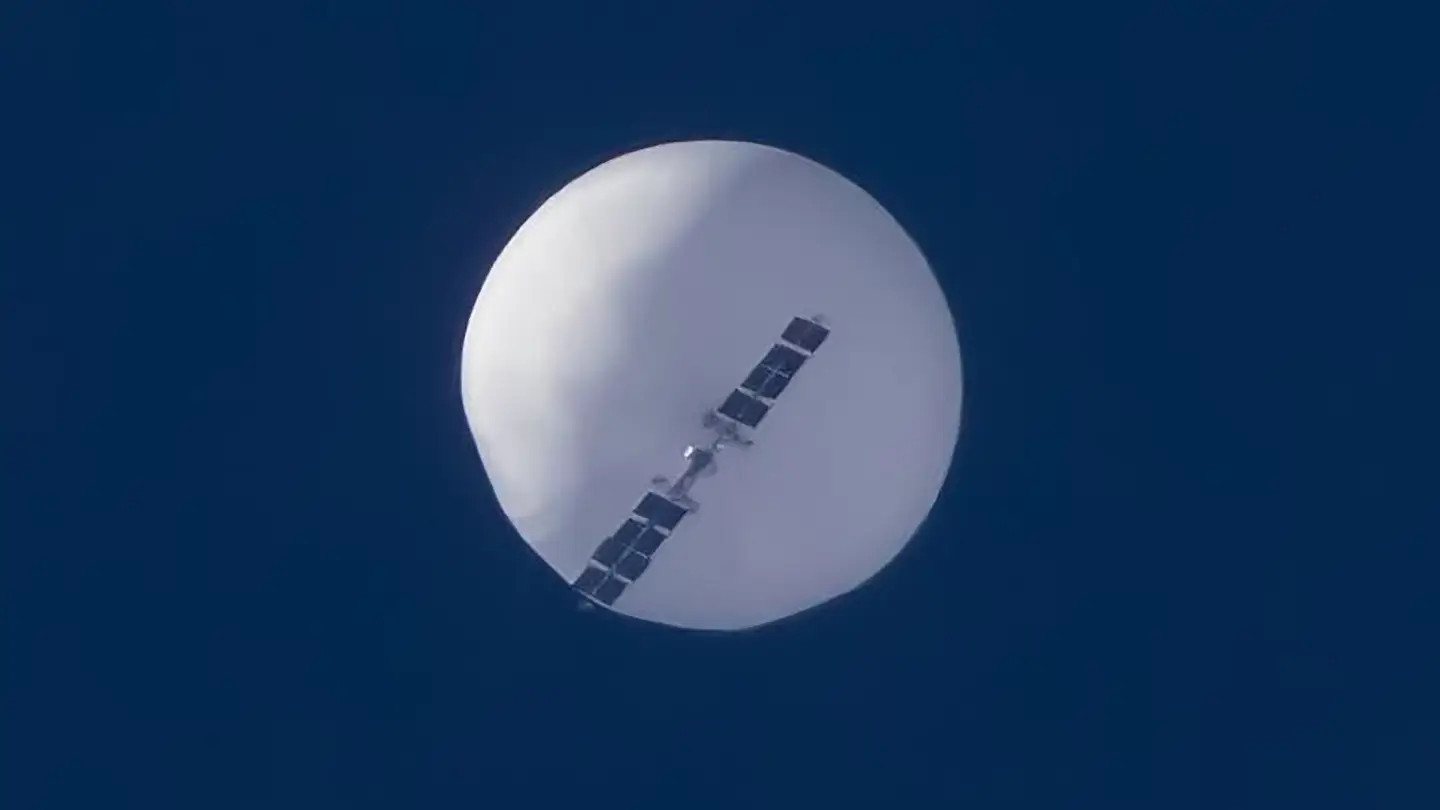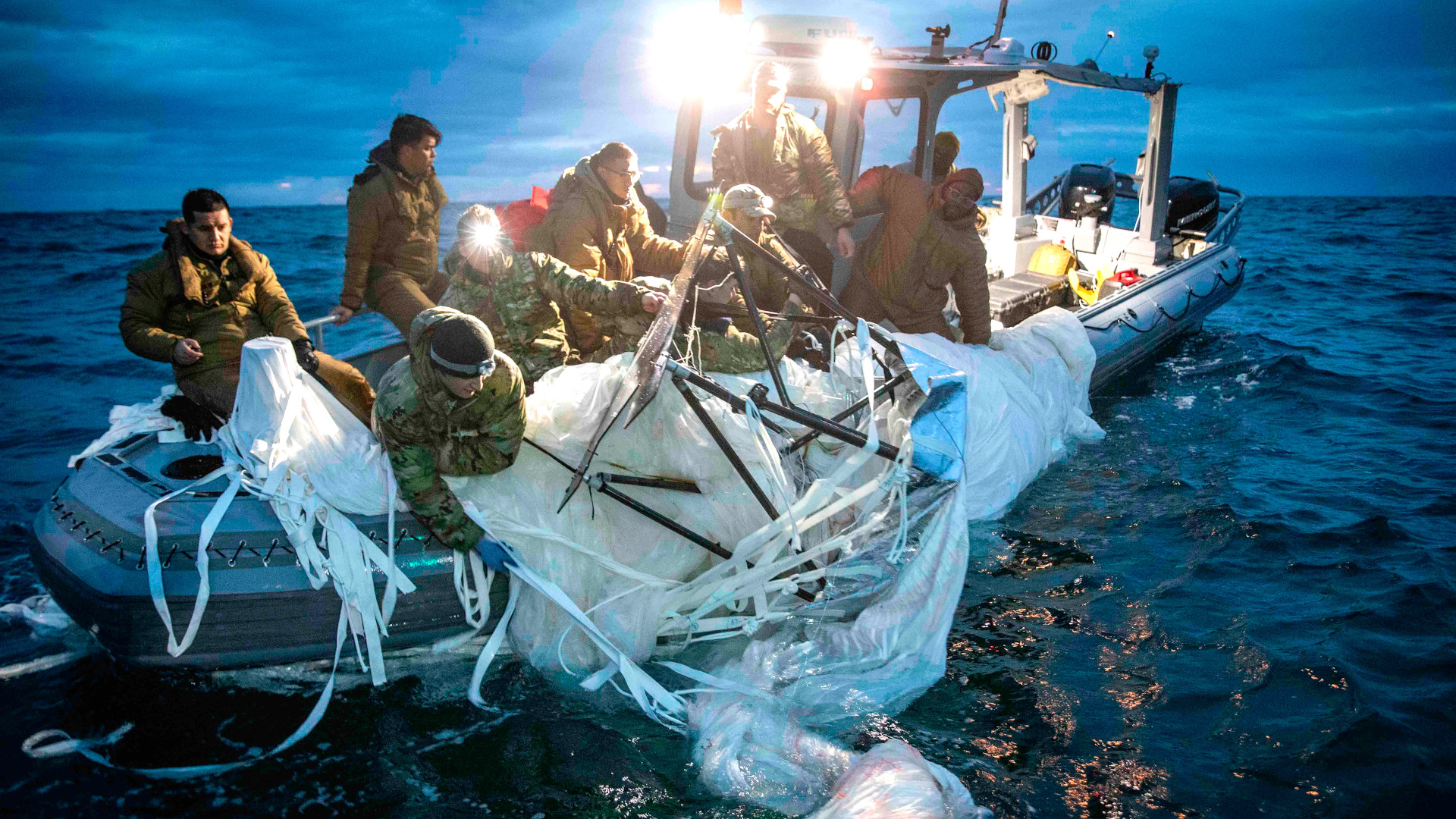The U.S. Navy has released the first pictures showing major components of a Chinese government surveillance balloon being recovered from the Atlantic Ocean off the coast of South Carolina. A U.S. Air Force F-22 Raptor stealth fighter shot down the balloon on Saturday after a more than week-long voyage through U.S. and Canadian national airspace. The War Zone‘s readers can bring themselves up to speed about what is known about the balloon and its flight in our prior reporting here.
The photographs in question, which were posted on the U.S. military’s Defense Visual Information Distribution Service (DVIDS) website earlier today, show Navy personnel in small rigid hull inflatable boats manually pulling portions of the balloon’s envelope and its payload out of the water. As seen in the pictures below and at the top of this story, the section of the payload is a tubular scaffolding-like structure with what may be a portion of a solar panel at one end.



The pictures’ captions say the individuals doing the recovery work are from the Navy’s Explosive Ordnance Disposal Group 2 (EODGRU2). EODGRU2 is part of the Navy Expeditionary Combat Command (NECC) and is headquartered at Naval Amphibious Base Little Creek in Virginia.
A U.S. government inter-agency effort to retrieve as much of the balloon and its payload began as soon as it was brought down over the weekend. Air Force F-15C Eagle fighters and a Navy P-8A Poseidon maritime patrol plane helped document the shootdown and where the debris fell, as you can read more about in this recent War Zone report based on audio communications recorded during the operation.
The current contingent working to retrieve the debris includes a Navy component that includes the members of EODGRU2, as well as the Harpers Ferry class amphibious warfare ship USS Carter Hall, the Ticonderoga class cruiser USS Philippine Sea, the Arleigh Burke class destroyer USS Oscar Austin, and the oceanographic research vessel USNS Pathfinder.

“The Pathfinder is a ship that conducts survey operations using sonar and other means to map out the debris field,” Air Force Gen. Glen VanHerck, the head of the U.S.-Canadian North American Aerospace Defense Command (NORAD) and U.S. Northern Command (NORTHCOM), explained at a press conference yesterday. “It’s capable of conducting oceanographic, hydrographic, bathymetric surveys of the bottom of the ocean to do that. And they’ll eventually produce us a map – they’re in the process of doing that, and I expect to have much more today – of the full debris field.”
VanHerck said unspecified uncrewed underwater vehicles (UUV) are also being employed to locate, document, and potentially recover debris.
The U.S. Coast Guard is also supporting the recovery effort with ships and aircraft. The Famous class Medium Endurance Cutter USCGC Venturous and two Sentinel class cutters, the USCGC Richard Snyder and USCGC Nathan Bruckenthal, as well as at least one MH-65 Dolphin helicopter, have been among its assets helping to search for debris and otherwise secure the scene.

The Federal Bureau of Investigation (FBI) is involved in the recovery operation and is working closely with the Naval Criminal Investigative Service agents, according to Gen. VanHerck.
It’s unclear how long the recovery effort will ultimately take. VanHerck said that, at least as of yesterday, the full extent of the debris field had not yet been determined. He said the main area of interest was expected to be “about 1,500 meters by 1,500 meters,” (2,250,000 square meters, or just under around one square mile) or “you know, more than 15 football fields by 15 football fields.”
The NORAD/NORTHCOM boss had also offered some details about the sheer size of the balloon itself.
“So the balloon assessment was up to 200 feet tall for the actual balloon. The payload itself, I would categorize that as a jet airliner type of size, maybe a regional jet such as a [Embraer] ERJ or something like that,” VanHerck explained. “Probably weighed in excess of a couple thousand pounds.”

Recovery of as much of the balloon and its payload is clearly a paramount objective for the U.S. government. There is much that could potentially be gleaned from the debris, including about the balloon’s capabilities and its basic construction. Detailed analysis of the balloon’s capabilities could provide further insights into Chinese concepts of operation surrounding these kinds of high-altitude surveillance activities and help in the development of countermeasures.
Beyond all this, intelligence exploitation of the debris will help the U.S. government reinforce its position that this is indeed a Chinese government intelligence-gathering asset. Portions of the intelligence gathered could be shared with allies and partners, as well as the general public. A number of other countries are now looking into the possibility that their airspace has been violated by similar Chinese balloons in the past.
This would all be on top of intelligence the U.S. government already gathered about the balloon and its capabilities during its flight, including using U.S. Air Force U-2 spy planes, as The War Zone was first to report.
Altogether, it will be very interesting to see what other imagery of the debris the U.S. government release going forward and what additional details might emerge about the balloon and its capabilities.
Author’s note: The incredible image at the top of this article was taken by photographer Tyler Schlitt of LiveStormChasers.com. Make sure to check out his work, including on his awesome Facebook page linked here.
Contact the author: joe@thedrive.com
